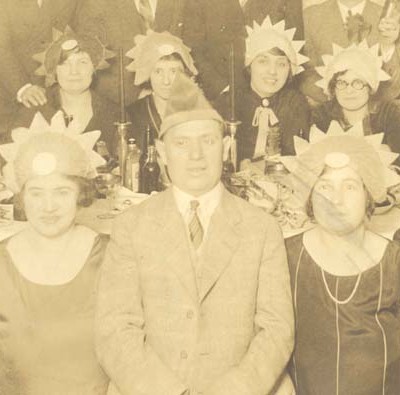
The borough of Donora, Pa. was incorporated in 1901, soon after the Union Steel Company was founded along the Monongahela River.
A small group of Jews chartered Donora Hebrew Congregation Ohav Sholom on August 24, 1903 and established a cemetery in Carroll Township the following year. The Orthodox congregation was among the first in the mid-Monongahela River valley and initially drew congregants from the nearby towns of Monessen, Monongahela, Charleroi and Belle Vernon.
The Jewish community of Donora grew quickly over its first decade, although it always remained small, even by the standards of the region. The Jewish population of the borough was approximately 164 in 1906, according to the American Jewish Year Book, and approximately 300 in 1919, according to the Jewish Criterion. Ohav Sholom Congregation peaked in the 1920s at 75 families, according to member Arnold Hirsch.
The founders of Ohav Sholom were mostly Hungarian immigrants who often sparred with Lithuanian, Polish and German members over ritual practices and educational methods. The congregation observed strict Orthodox guidelines and offered a daily cheder (religious school). Sometime between 1902 and 1904, the Pittsburgh Section of the National Council of Jewish Women organized a progressive religious school in Donora, independent of the congregation. The school was the second branch of what later became known as the Southwestern District of Pennsylvania Jewish Religious Schools program. The religious school had as many as 50 students in its early years. The school held its first confirmation exercises in 1910, in a ceremony at the Grand Opera House attended by Rabbi J. Leonard Levy of Rodef Shalom Congregation in Pittsburgh. In the 1930s, Ohav Sholom held confirmation exercises in the synagogue, although the practice was controversial.
The members of Ohav Sholom worshipped in a rented store room at 320 McKean Avenue before breaking ground on a $15,000 synagogue on Thompson Street in 1911. The two-story building had classrooms downstairs and a sanctuary upstairs. The sanctuary was designed with a bima (platform) in the center of the room and a stage, up front. During a renovation in the 1930s, the basement was converted into a social hall and kitchen. The renovation sparked a debate within the congregation, because some of the more religious members felt it would be inappropriate to allow card games in the building. According to Hirsch, Rabbi Aaron Mordechai Ashinsky of Pittsburgh was brought to Donora to mediate a solution. After a lengthy communal meeting, he determined that members should be prohibited from playing card games within a section of the social hall directly beneath the ark containing the Torah scrolls. Card playing was permitted everywhere else in the small room. A second renovation in 1965 removed the central bima and only used the front stage. At that time, the congregation was officially renamed Ohav Sholom Congregation of Donora.
By 1920, Ohav Sholom was home to a Young Men’s Hebrew Association, a Young Women’s Hebrew Association, a men’s club called the Sons of David, and a Hebrew Ladies Aid Society, which eventually became the Ohav Sholom Sisterhood. The B’nai B’rith Women’s Lodge No. 172 was established in 1909. A men’s lodge was established in 1935 and renamed the Rubin Hirsch B’nai B’rith Lodge No. 1208 in 1953 after a former president of Ohav Shalom Congregation. Over the years, the congregation also supported youth groups such as the Observation Society and the Yiddish Redners Club.
Ohav Sholom was unable to afford a rabbi from its inception until 1916, although visiting rabbis regularly offered their services, according to the WPA Church Archive. Rabbi Gilbert Albert Elefant led the congregation from 1916 until he took a position in New Castle in 1939. He was succeeded by Rabbi Samuels Weiss, who served during the 1940s, and Rabbi Benjamin Krohn, who stayed with the congregation until 1958. Rabbi Emanuel Green, Rabbi Moishe Klein, Rabbi Bernard Fuerst and Rabbi Phillip Labowitz each had a short tenure until the mid-1960s when the congregation employed part-time rabbinic leadership. For a time, the congregation owned a house for its rabbi.
The Jewish population of Donora declined after World War II. The Donora Zinc Works closed in 1957 after years of lawsuits stemming from a deadly smog incident in 1948 and the increasing obsolescence of its industrial process. The American Steel and Wire Company mill closed in 1962. Ohav Sholom Congregation had three members in 1993, when the congregation disbanded and donated its synagogue to the Campfire Boys and Girls of Mon Valley. The congregation leased the sanctuary for Sabbath services until 1994, when members began meeting at Temple Beth Am in nearby Monessen.